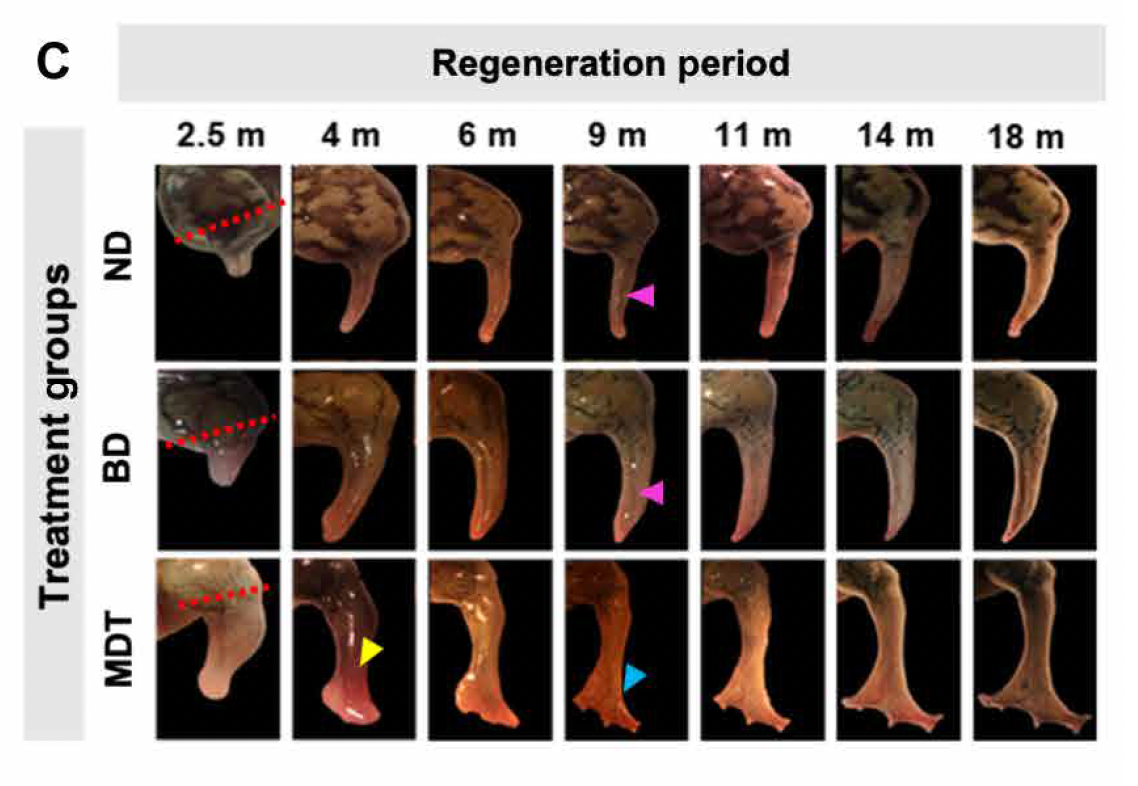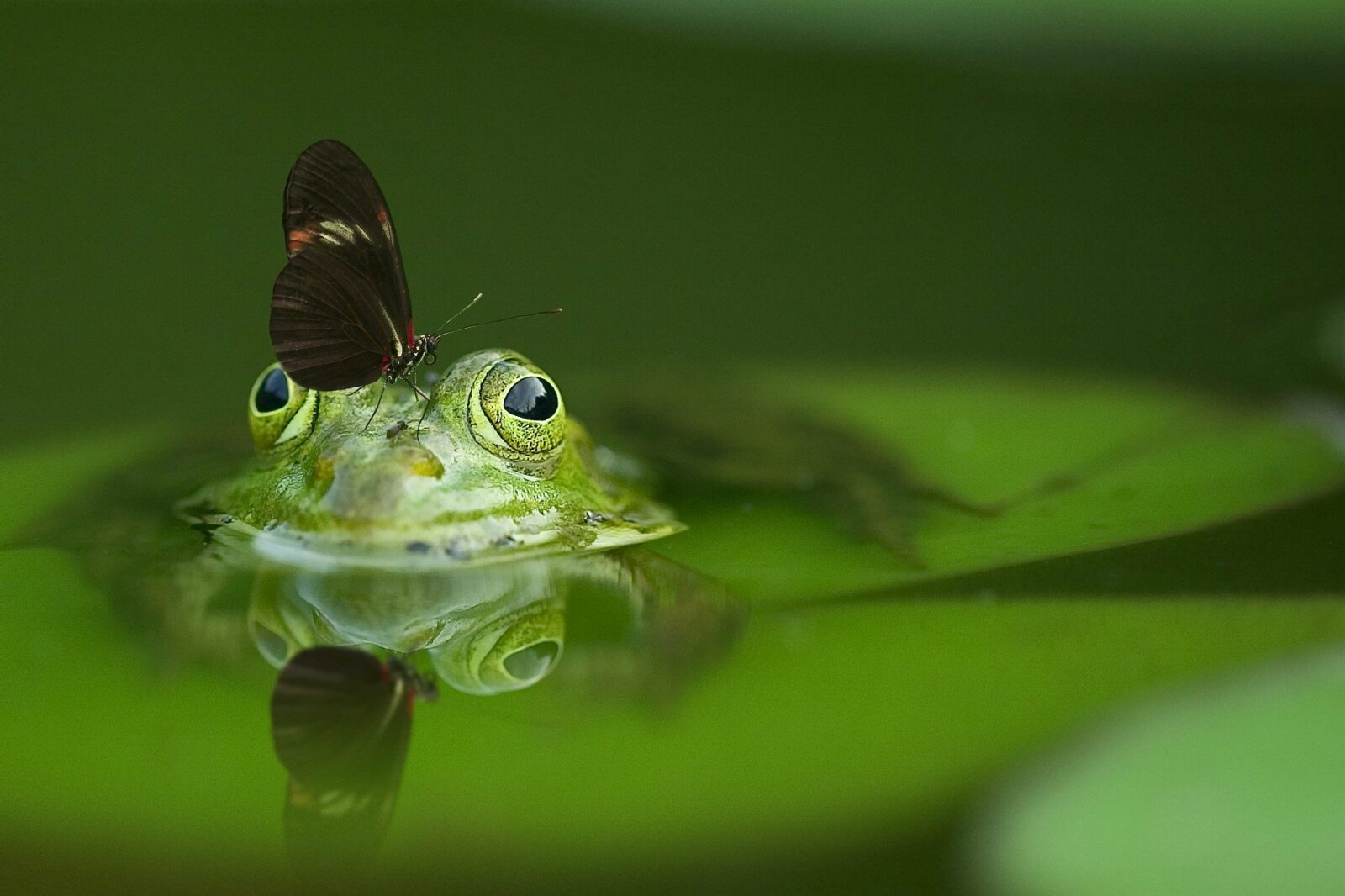Frogs, unlike their salamander counterparts, cannot restore severed limbs, but an intriguing new experiment reveals that under the appropriate circumstances, frogs may partly rebuild their missing body parts.
A unique therapy that allowed African clawed frogs (Xenopus laevis) to partly regrow their severed hind limbs was described in an article published today in Science Advances. The therapy included five different medications as well as a wearable gadget dubbed the “BioDome.” According to the study, which was headed by researchers from Tufts University and Harvard University’s Wyss Institute, merely 24 hours of exposure to this chemical cocktail promoted a healing phase that lasted 18 months.
“It’s exciting to see that the drugs we selected were helping to create an almost complete limb,” Nirosha Murugan, the first author of the paper and a researcher at Tufts, said in a statement. “The fact that it required only a brief exposure to the drugs to set in motion a months-long regeneration process suggests that frogs and perhaps other animals may have dormant regenerative capabilities that can be triggered into action.”
One Day Human Will be Able to Grow their own Limbs
This thrilling achievement suggests that animals that aren’t capable of spontaneous regeneration can rebuild lost limbs and possibly other body parts like organs and tissue under certain conditions. This particular method may not work for humans right now, but the report may serve as a starting point for future research in the hopes of producing something comparable for mammals. However, the current study is still in its early stages, and further work is needed to validate the findings and better understand the processes behind the reported regeneration.
Frogs, unlike salamanders, starfish, crabs, and certain lizards, cannot recover missing body parts. Mammals cannot, either, but the human liver can return to full size even if 90 percent of it is removed. In addition, as scientists discovered in 2019, humans have the ability to rebuild torn or overworked cartilage in our joints. Regrowing missing digits or a complete limb is not conceivable in mammals due to how wound healing works; for the most part, our injuries are covered in scar tissue, which helps protect them from infection or additional injury.
Michael Levin, a Tufts scientist and co-author of the current work, has spent more than 20 years attempting to understand how batches of cells decide what to construct. This study is significant because the findings might lead to therapies for birth abnormalities, cancer, severe injuries, aging, and perhaps tissue and limb regeneration.
“People have been working on limb regeneration for a long time, studying animals like salamanders which already regenerate organs,” Levin explained in an email. “Our approach is different from others that focus on stem cell implants or genome editing: rather than try to micromanage the process, we seek brief signals that will convince the cells to restart doing what they already did in embryonic development.”
To make their case, Levin and his colleagues created an elixir containing five drugs that increased cell proliferation, decreased inflammation, shifted cells into repair mode, inhibited collagen production (which can lead to scar formation), and aided in the growth of nerve fibers, blood vessels, and muscle.

Bloody Trials
The scientists removed the hind limbs of 115 mature female African clawed frogs for the experiment. In terms of ethics, Levin said that his team followed a thorough process, authorized by a council of veterinarians and aquatics animal specialists, and that general anesthesia was utilized to limit discomfort. Respect for animals is an important component of all of the science work.
The chemical cocktail’s components were plainly important, but so was the bioreactor. The wearable gadget prevented the normal process of stump closure and instead fostered limb regrowth. The BioDome was used to create an amniotic-like environment, which, combined with the correct medications, enables the rebuilding process to occur without the interruption of scar tissue, as stated by David Kaplan, a co-author of the paper and an engineer at Tufts.
He said that researchers might need to tweak the BioDome and the mixture, and they’re definitely not ready for human trials just yet, he says, but most probably, this is the way to medical regeneration in the long run.
It took months for the limbs to recover, but the results were spectacular. When compared to the original, the regenerated hind legs were practically entirely functioning, with identical bone structure and internal tissues (including neurons). The frogs were even able to rebuild numerous toes, although without bones. In testing, the frogs moved through water as usual and responded when their regenerated legs were prodded.
Even frogs and humans have extremely distinct biology, Levin said key anatomical control mechanism is shared by all vertebrate species. If salamanders can recover, we can as well.
The team intends to test additional cocktails in mice and then adjust the combination as needed in the future.
The treatment may have activated a molecular pathway associated with embryonic development, according to the researchers, but more data is needed to confirm this. It would also be nice to see other studies duplicate these findings and delve further into the specific regeneration mechanisms at work. Nonetheless, it’s a good start and a fascinating new area for future.












Leave a Reply